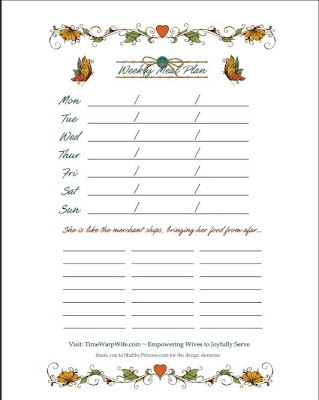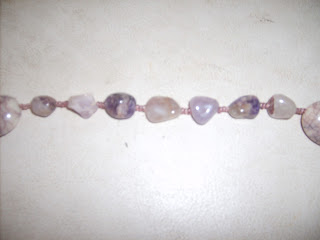Welcome to a Special Request Saturday. These posts will not occur every week, but they will occur on weeks that I have special requests that I can't wait to share. I had a suggestion from a friend for this post, and I didn't want to make it wait until Wednesday or Friday because I thought it was a great idea. I am familiar to some extent with the Catholic Rosary, but had never been introduced to the Protestant Rosary or Beads. For those, like me, who had never heard of Protestant Prayer Beads until this project, I am going to give some background as well as how to use them in addition to the DIY. Who says you can't craft and learn at the same time?
What are Protestant Prayer Beads?
The Protestant "rosary" was created in the 1980s by a group of American Episcopalians seeking a a more contemplative, more meditative method of prayer. They are a blend of the Orthodox Jewish Prayer Rope and the Roman Catholic Rosary. The Protestant rosary begins with a cross, followed by an invitatory bead, with which we invite the presence of God. The chain then creates a circle consisting of four cruciform beads representing each branch of the cross, 28 weeks beads in four groups of seven literally representing the seven days of the week. In Judeo-Christianity, the number 7 is representative of spiritual perfection. Jesus is honored in the amount of beads and the cross. One bead for each year of his earthly life totaling 33. Each bead is assigned its own prayer. They are connected by uncounted spacer beads allowing hands to flow from bead to bead while praying to keep the mind from wandering.
Making Your Prayer Beads, or Rosary
Here's what you'll need:
Beading wire or thread
Size 10 beading needle if using thread
Clothespin or small clamp if using thread
Scissors or shears
1 cross or other terminal charm
1 invitatory bead – Large, recommended size 10-12 mm. or larger
4 cruciform beads – Medium, recommended size 8–10 mm.
28 weeks beads - Small, recommended size 6–8 mm.
Spacer beads - seed beads in size 6, 8 or 11
I have made two sets of prayer beads for this project and will show pictures of either or both throughout this post.
Make sure that when you choose a beading wire, you choose a very thin, flexible wire. The bead sizes in the supply list are just suggestions. As long as you end up with 28 small, 4 medium, and one large bead along with the other materials, you will be just fine. I chose to use beading wire, so my directions will be for that. If you choose beading thread, please adapt to your needs.
So now that we have all of our materials gathered, let's get started.
Begin by cutting about a 3.5 to 4 foot section of wire. Tie a loose knot or place a clothespin about 4 inches from the end of the wire. String your cross or terminal charm followed by 5 seed beads. Then string your invitatory bead followed by 5 seed beads and your first cruciform bead.
Now you are ready to begin stringing the path of the circle of prayer beads. Begin with three seed beads, then add one weeks bead. Continue in this fashion until there are seven weeks beads, then end with three more seed beads. Add your second cruciform bead. You have now completed the first section of the round. Repeat the pattern used in this step until all weeks and cruciform beads have been strung, ending with three seed beads.
To close the circle, and finish the rosary, you will need to string the wire back down through the first cruciform bead, the spacer beads, the invitatory bead, and the remaining seed beads to return to the cross or terminal charm.
Untie your beginning knot and hold both strands of wire together. Pull the wire to tighten the beads up, then tie a snug knot around the eye of the cross or terminal charm, making sure the knot is pulled all the way tight as close to the seed beads as possible with no slack in the wire. Trim the wire ends to about 3/4 of an inch. Thread the loose ends back up through the spacer beads to hold in place. If you choose, you can also add some glue to the knot to make it more secure.
This rosary style is more traditional. I chose a cross pendant in silver with clear crystal accent stones. I chose a smoky grey crystal invitatory bead and smooth, natural stones with a lavendar hue for my weeks and Cruciform beads. For spacers I used darker lavendar seed beads in size 11.

This rosary is a more non-traditional style. I chose these beads to demonstrate that the style is completely personal preference. For this rosary, the cross pendant is in an antique brass finish with yellow and orange crystals and a apricot tone pearl. I choose an amber crystal invitatory bead. My cruciform beads were large, apricot tone pearls. Instead of fixing the weeks beads between spacers for this rosary, I chose to use a different technique. I used size 6, antique brass finish seed beads to make an length that would allow the beads to slide. For my weeks beads I used Pandora style charm beads in a range of amber tones. The Pandora style beads are large enough in the center to slide freely over the seed beads and travel the full length between cruciforms.
No matter what beads you choose for your Prayer Beads, the most important thing is that you end up with the beads strung into this format.
How Do I Pray With Protestant Prayer Beads?
Find a quiet spot and allow your body and mind to become restful and still. After a time of silence, begin praying the prayer beads at an unhurried, intentional pace. When you are ready to begin, hold the Cross and say the prayer you have assigned to it, then move to the Invitatory Bead and the prayer you have assigned to it. Enter the circle with the first Cruciform Bead, then continue to your right, praying with every weeks and cruciform bead along the way. It is suggested that you complete the circle of the beads three times to signify the Trinity. The repetition is said to enable your mind to rest and your heart to become quiet and still. Praying through the entire circle three times with the cross at the beginning or end results in one hundred prayers, which is the same as the Orthodox Rosary. After you have prayed the circle three times through, you can choose to close your prayers with The Lord's Prayer at the Invitatory bead and "I bless the Lord" or "Thanks be to God" at the cross. Once you have finished praying, a quiet time should be allowed.
Selecting Prayers
You will need to select the prayers that you want to assign to each bead and the cross and practice them until you easily remember which prayer belongs to which bead. You can of course create and assign your own prayers or mix and match existing prayers.
Several prayers include Bless The Lord, Trisagion and Jesus Prayer, Agnus Dei, Julian of Norwich, A Celtic Prayer, Come Lord Jesus, Saint Patrick's Breastplate, and an Evening Prayer. The scripts to all of these can be found
here.
Shawn Foles, the friend who inspired this post, has been kind enough to share with us the prayer that he uses. Shawn says,
"Prayer beads came to prominent use in the United States in the 1980s. They came into use by the Episcopalians in the United States and have since spread to several groups including Lutheran and United Methodists. For me as a United Methodist, I incorporate them into my prayer life in times when I struggle to focus on prayer along with several other prayer aides like a labyrinth. One of the easiest and most centering prayers involves ACTS prayer. ACTS prayer is a great tool to use to teach children how to pray, and also to focus when you find prayer difficult. Below is an outline of ACTS prayer and using prayer beads to accomplish it.
The pattern for the prayer bead is to start with the large bead behind the cross called the invocation bead. After that you proceed to the first large bead (cruciform). Once finished with the cruciform you proceed through the 7 week beads until you reach the next cruciform bead. Continue this pattern until you have gone in 3 complete circles around the prayer bead. Once you have finished 3 complete circles including the invocation bead each time, you have completed 99 prayers. Praying over the cross makes 100. You then relax and listen for the spirit to speak.
A-Acknowledgement
C-Confession
T-Thanksgiving
S-Supplication (Prayers for need)
ACTS Prayer
1st time praying though beads
Invocation Bead:
May the words of my mouth and the meditation of my heart be pleasing in your sight, O LORD, my Rock and my Redeemer.Psalm 19:14
Cruciform Bead:
Lord, Hear my prayers and answer them swiftly so that I may be more like you
Each section of the prayer beads represents the same section of your life. They are:
1st set of week beads: Family
2nd set of week beads: Friends
3rd set of week beads: The World
4th set of week beads: Yourself
The first time around pray prayers of Confession. Areas in which you have not served God in the areas listed
The second time through pray prayers of Thanksgiving. Things within each group you are thankful for. (I.E. Great Children or spouses during the 1st set, supportive friends during the 2nd set, etc)
The third time through pray prayers of supplication. This is the time for you to lift up prayers to God for your needs. (I.E. prayers of help for a family member or friend. Prayers of courage for yourself in the 4th section of bead, or prayers for peace in the world during the 3rd section of beads)
Cross prayer (Final Prayer):
Oh gracious God. You hear my prayers of confession, thanksgiving, and need. I confess that I haven't followed you with my whole heart, but I seek to be more like you each day. Hear my prayers and accept them as pleasing in your sight as I sit and allow your spirit to wash over me. Amen"
I am so glad you joined me for this Special Request Saturday. If you make your own set of prayer beads or create your own prayer, please tell me about it or show me a picture in the comments below. If you have any more specific questions, ask away. I will do my best to answer or direct you to someone who can. See y'all next time!














































